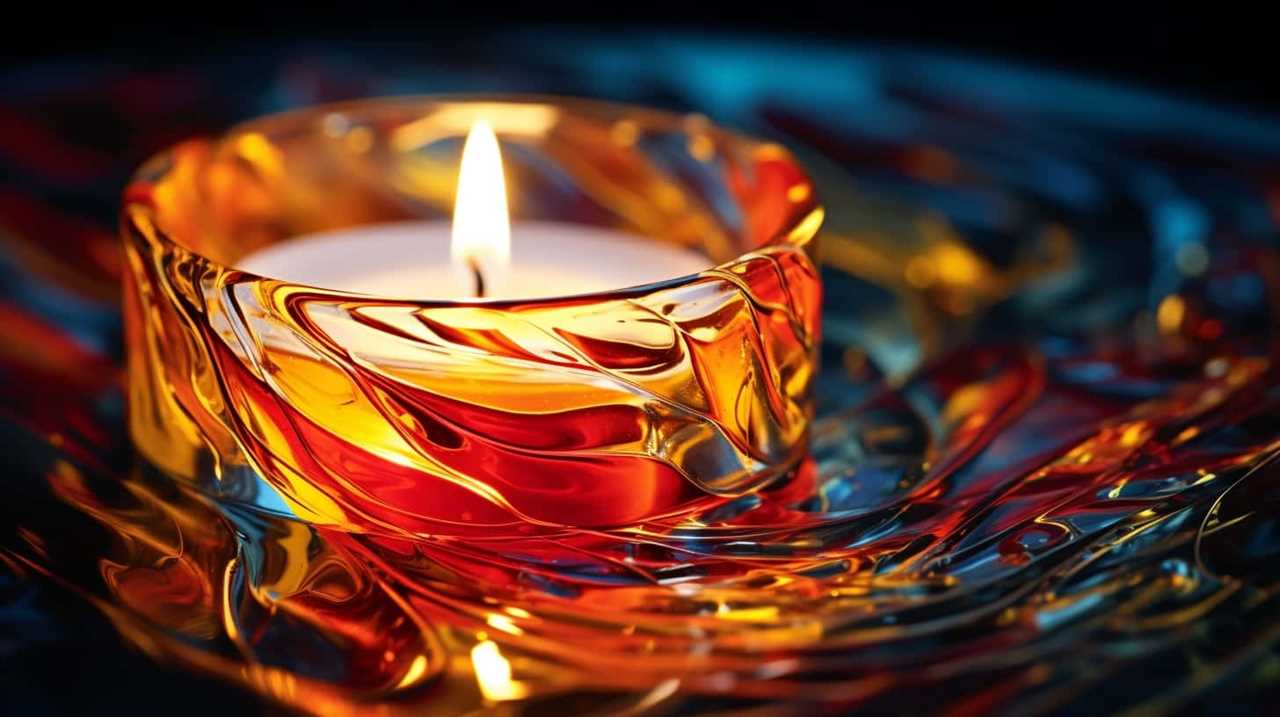Have you ever wondered why your candle wax bubbles like a lively cauldron? We’re here to explain this fascinating phenomenon.
When it comes to candle wax, there are several factors that can cause it to bubble and simmer like a pot on the stove. From the composition of the wax to temperature fluctuations and even the type of candle you’re using, each element plays a role in this fascinating display.
So, if you’re eager to master the art of candle burning and understand why your wax is bubbling, join us as we delve into the world of candle care and unravel the secrets behind this mesmerizing spectacle.
Key Takeaways
- The type and purity of wax, as well as temperature control, play a crucial role in preventing candle wax bubbling.
- Properly centering and straightening the wick before pouring, using a heat gun or tapping the mold/container, and pouring the wax at the correct temperature can prevent air pocket formation and bubbling.
- Improper wick maintenance, incorrect flame height, and placement in drafty areas can cause wax to bubble. Trimming the wick, properly centering it in the candle, and monitoring flame height can prevent excessive heat and bubbling.
- Factors such as candle additives, candle placement, and environmental factors can also contribute to wax bubbling. Choosing the right type of candle, avoiding drafts, and maintaining proper candle care and maintenance can minimize bubbling.
Wax Composition
In our experience, understanding the wax composition is crucial in determining why candle wax may bubble. The composition of candle wax plays a significant role in its behavior during the candle-making process. When wax is melted and poured into a candle mold, it undergoes a phase change from solid to liquid. Different types of wax have varying melting points, which can affect the likelihood of bubble formation.
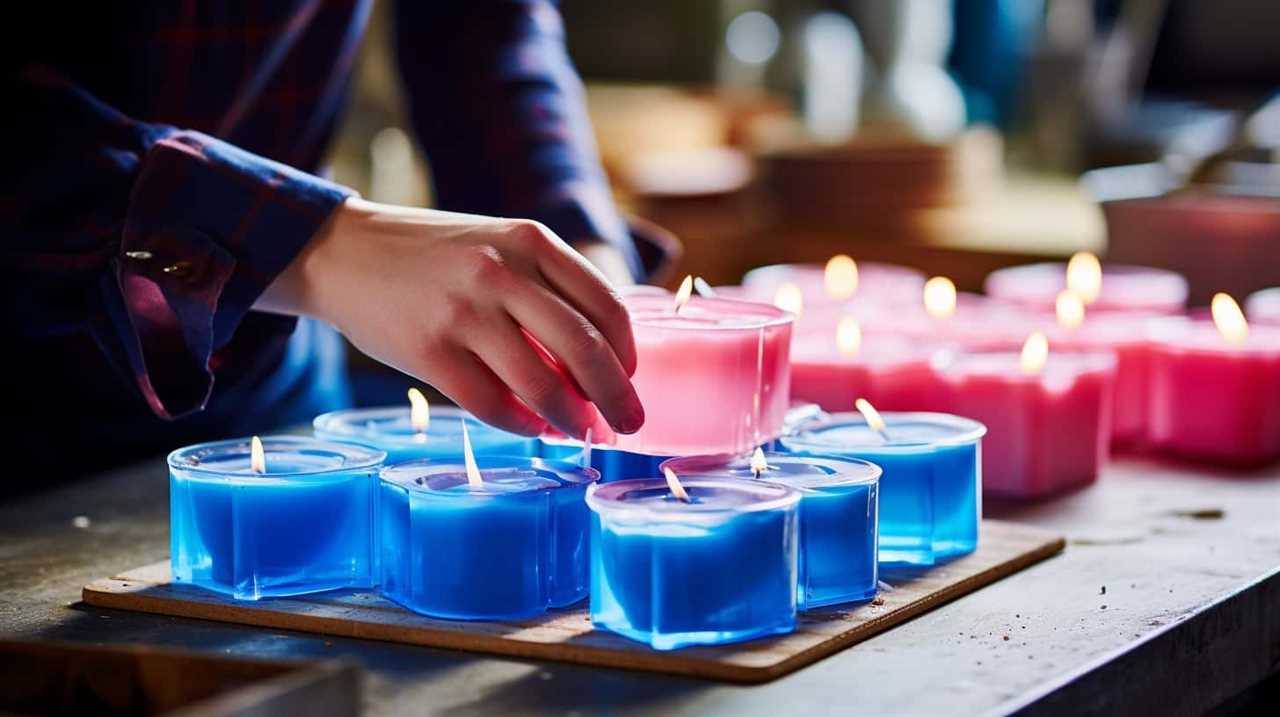
For example, paraffin wax has a lower melting point compared to beeswax, making it more prone to bubbling. Additionally, the additives and impurities present in wax can also impact its bubble formation tendencies. These factors highlight the importance of selecting the appropriate wax type and ensuring its purity to minimize the occurrence of bubbles during the candle pouring process.
Now, let’s explore another factor that contributes to bubble formation: temperature fluctuations.
Temperature Fluctuations
Continuing our exploration of bubble formation in candle wax, let’s now delve into the effect of temperature fluctuations.
Temperature control plays a crucial role in maintaining the integrity of candle wax. Wax has a specific melting point, which is the temperature at which it transitions from a solid to a liquid state. When exposed to high temperatures, such as a direct flame or excessive heat, the wax can reach a temperature higher than its melting point. This can lead to the formation of bubbles as the wax rapidly expands and releases trapped air.

On the other hand, if the temperature drops too quickly, the wax may solidify before all the air bubbles have a chance to escape, resulting in the formation of air pockets.
In the next section, we’ll explore the impact of air pockets on candle wax.
Air Pockets
Air pockets in candle wax can result in bubbling, which can be both frustrating and aesthetically unappealing. To prevent air pocket formation, it’s important to ensure that the wax is poured at the correct temperature and that it’s stirred thoroughly before pouring.
Troubleshooting bubbling wax involves examining the pouring technique, the type of wax being used, and the environmental conditions during the candle-making process.
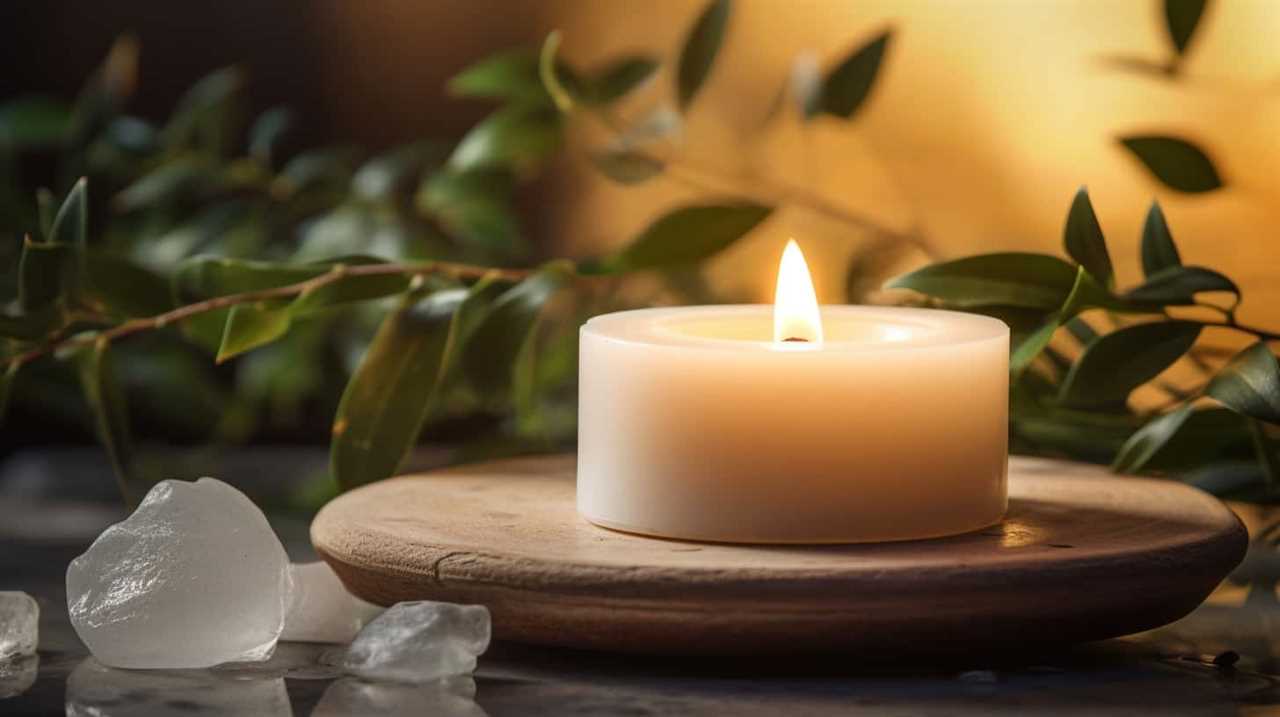
Preventing Air Pocket Formation
To prevent the formation of air pockets in candle wax, we can take certain measures. Air pockets can lead to various issues such as preventing wax cracking and troubleshooting uneven burning.
One effective method is to ensure that the wick is properly centered and straight before pouring the wax. This helps to create an even distribution of heat, reducing the chances of air pockets forming.
Additionally, using a heat gun or a hairdryer on low heat can help eliminate any air bubbles that may have formed during the pouring process.
Another technique is to gently tap the mold or container on a hard surface to release any trapped air.
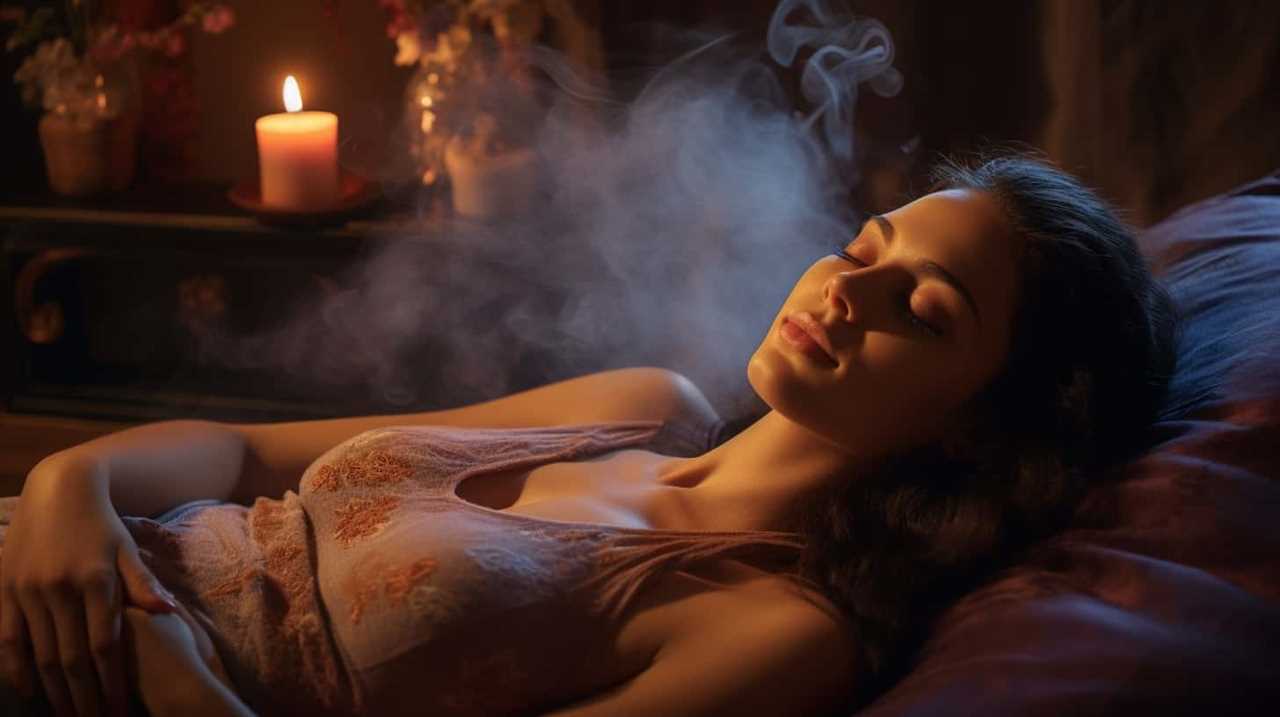
It’s also important to pour the wax slowly and at the correct temperature to minimize the formation of air pockets.
Taking these precautions can greatly improve the quality of your candles and provide a more consistent burning experience.
Troubleshooting Bubbling Wax
When troubleshooting bubbling wax, one thing we can do is check for any potential issues with the pouring process. Bubbles in the wax can occur if the wax is poured too quickly or if there are air pockets in the container. To prevent bubbles, it is important to pour the wax slowly and evenly. Additionally, tapping the container gently on a surface can help release any trapped air. If bubbles still persist, there are troubleshooting techniques we can employ. One technique is to use a heat gun or hairdryer to carefully heat the surface of the wax and pop any visible bubbles. Another technique is to poke the bubbles with a needle or pin to release the trapped air. By addressing these potential issues and employing these troubleshooting techniques, we can minimize or eliminate bubbling wax.
| Troubleshooting Technique | Description |
|---|---|
| Heat gun or hairdryer | Apply heat to the surface of the wax to pop bubbles |
| Needle or pin | Carefully poke bubbles to release trapped air |
Wick Issues
We often encounter wick issues that can cause candle wax to bubble. These issues are usually a result of improper wick maintenance or incorrect flame height.
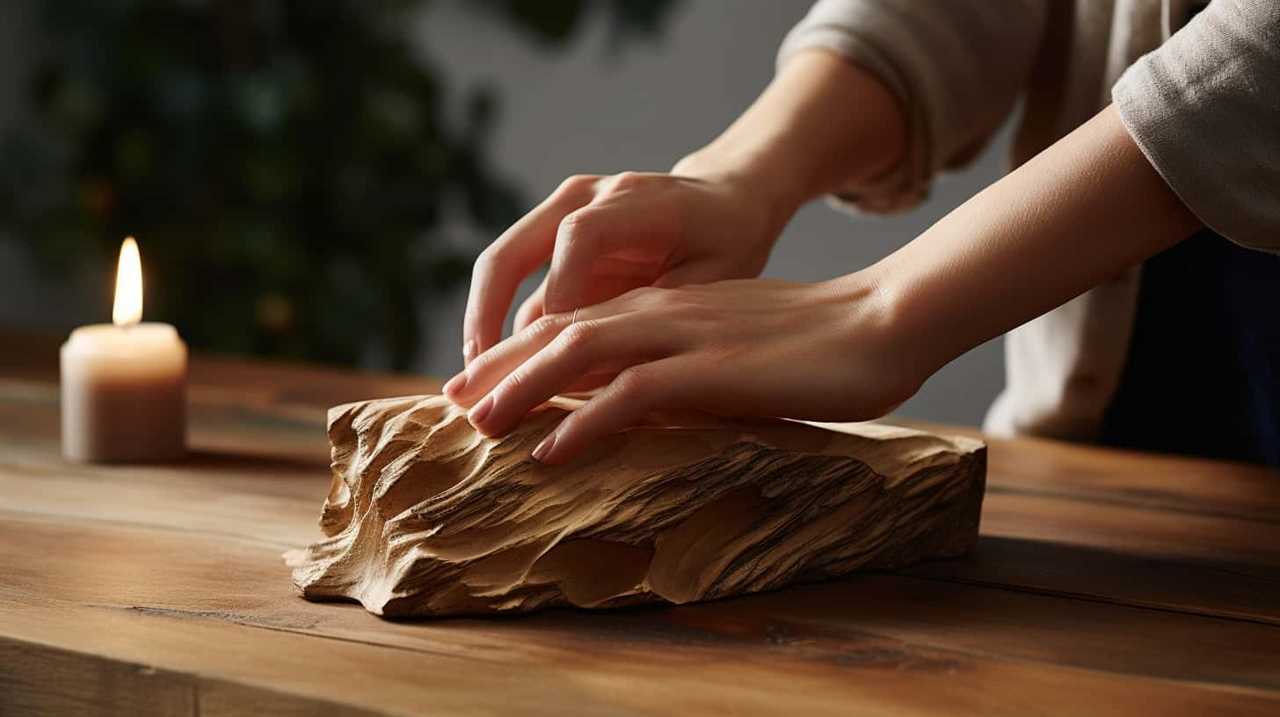
Here are some factors to consider when dealing with wick issues:
- Wick Maintenance:
- Trimming: Ensure that the wick is trimmed to about 1/4 inch before each use. This prevents the wick from burning too hot and causing the wax to bubble.
- Centering: Make sure the wick is properly centered in the candle. A wick that’s off-center can lead to an uneven burn and potential bubbling of the wax.
- Flame Height:
- Adjusting: Monitor the flame height while the candle is burning. If the flame is too high, it can generate excessive heat and cause the wax to bubble.
- Drafts: Avoid placing candles in drafty areas as this can cause the flame to flicker and burn unevenly, leading to potential wax bubbling.
Type of Candle
What factors contribute to the bubbling of candle wax based on the type of candle? The type of wax used in a candle plays a significant role in whether or not it will bubble. Different wax types have different melting points and chemical compositions, which can affect how the wax behaves when heated. Additionally, the presence of additives or fragrances in the wax can also impact its tendency to bubble. To illustrate this, let’s take a look at the following table:
| Wax Type | Melting Point | Additives |
|---|---|---|
| Paraffin | 130-160°F | Yes |
| Soy | 120-180°F | No |
| Beeswax | 144-149°F | No |
Understanding the characteristics of different wax types can help ensure candle safety and prevent wax from bubbling. By choosing the right type of wax and being mindful of additives, you can enjoy a smooth and hassle-free candle burning experience.
Container Size
The size of the container also has an impact on the bubbling of candle wax. When the container is too small, it restricts the flow of air around the flame, causing the wax to melt unevenly. This uneven melting can lead to bubbling as the heat is trapped in certain areas.
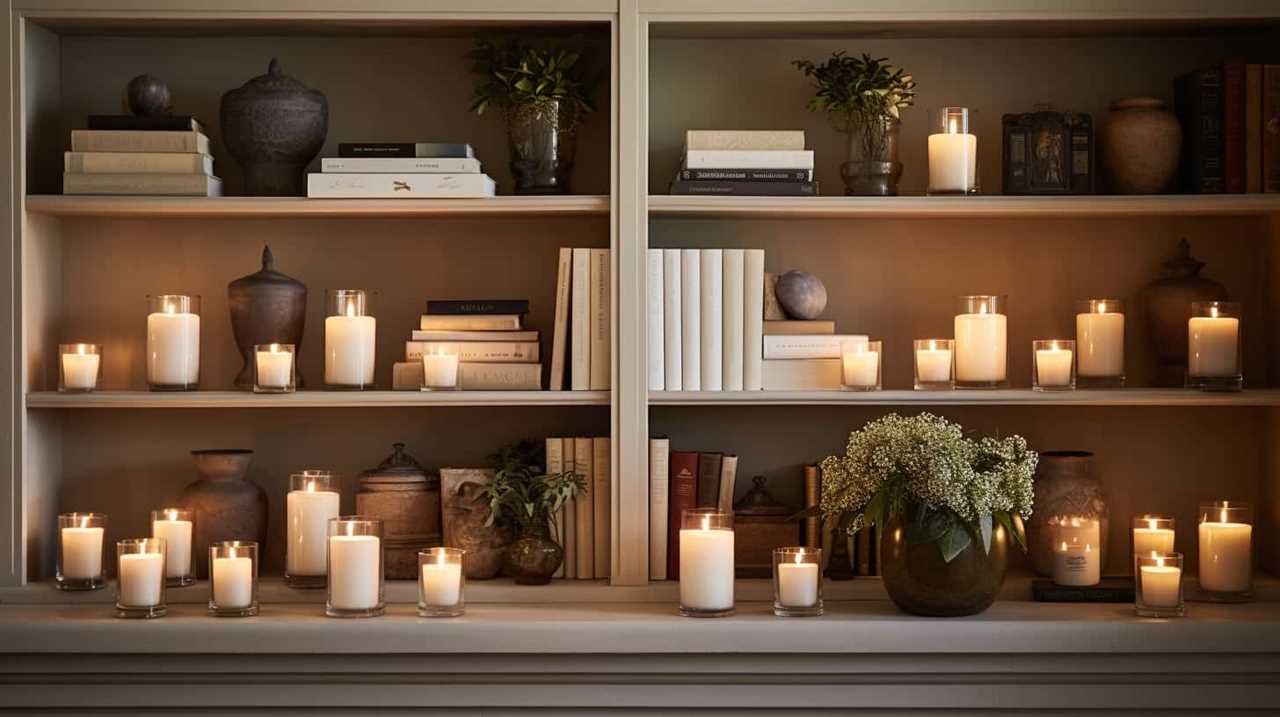
On the other hand, if the container is too large, it may take longer for the wax to heat up and melt properly, resulting in a slower burn and potential wax bubbling. Additionally, a container that’s too deep may cause the wax to pool in the center, creating hotter temperatures that can lead to bubbling.
It’s important to choose a container size that allows for proper airflow and even wax melting to prevent bubbling.
Fragrance Oils
When using fragrance oils in candle making, it’s important to consider their impact on wax bubbling. Fragrance oils are a crucial component in creating scented candles, but they can also contribute to issues such as wax bubbling.
The selection of fragrance oils plays a significant role in the overall performance of the candle. Some fragrance oils have a higher concentration of volatile compounds, which can lead to increased bubbling in the wax. It’s essential to choose fragrance oils that are specifically formulated for candle making to minimize the risk of bubbling.

Additionally, the scent throw of the fragrance oil should be considered. Fragrance oils with a strong scent throw may contain higher amounts of volatile compounds, which can increase the likelihood of bubbling.
Careful fragrance selection and consideration of scent throw are crucial steps in avoiding wax bubbling in scented candles.
Candle Additives
Candle additives play a crucial role in enhancing the performance and aesthetics of candles. By incorporating additives into the wax, we can achieve various benefits such as improved scent throw, increased burn time, and enhanced color vibrancy.
Some common types of candle additives include fragrance enhancers, UV inhibitors, and viscosity modifiers, each serving a specific purpose in candle making.

Benefits of Candle Additives
One of the benefits of using candle additives is that they can enhance the overall performance of the wax.
By incorporating scent additives, candles can emit a pleasant aroma when burned, creating a more enjoyable environment. Additionally, scent additives can help mask any unpleasant odors that may be present.
Different types of color additives can also be used to enhance the visual appeal of candles. These additives can provide vibrant and long-lasting colors, adding an aesthetic element to the candle.
The use of additives can also improve the burn time and stability of the wax, ensuring that the candle burns evenly and lasts longer.

Common Candle Additive Types
To further explore the benefits of candle additives, let’s take a look at some common types that can enhance the performance and visual appeal of the wax.
One popular type of candle additive is the wax color additive. These additives are used to enhance or change the color of the candle wax. They can be in the form of liquid dyes or solid pigments that are mixed into the melted wax. The melting point of the wax color additives should be compatible with the candle wax melting temperature to ensure proper dispersion and color stability.
Another common candle additive type is the fragrance oil. These oils are added to the melted wax to provide pleasant scents when the candle is burned. Fragrance oils can be synthetic or derived from natural sources, and they come in a wide variety of scents to suit different preferences.
Burning Time
As we explore the reasons for candle wax bubbling, it’s important to consider the impact of burning time. The duration for which a candle burns can greatly affect the behavior of the wax. Here are some key factors to consider regarding burning time:
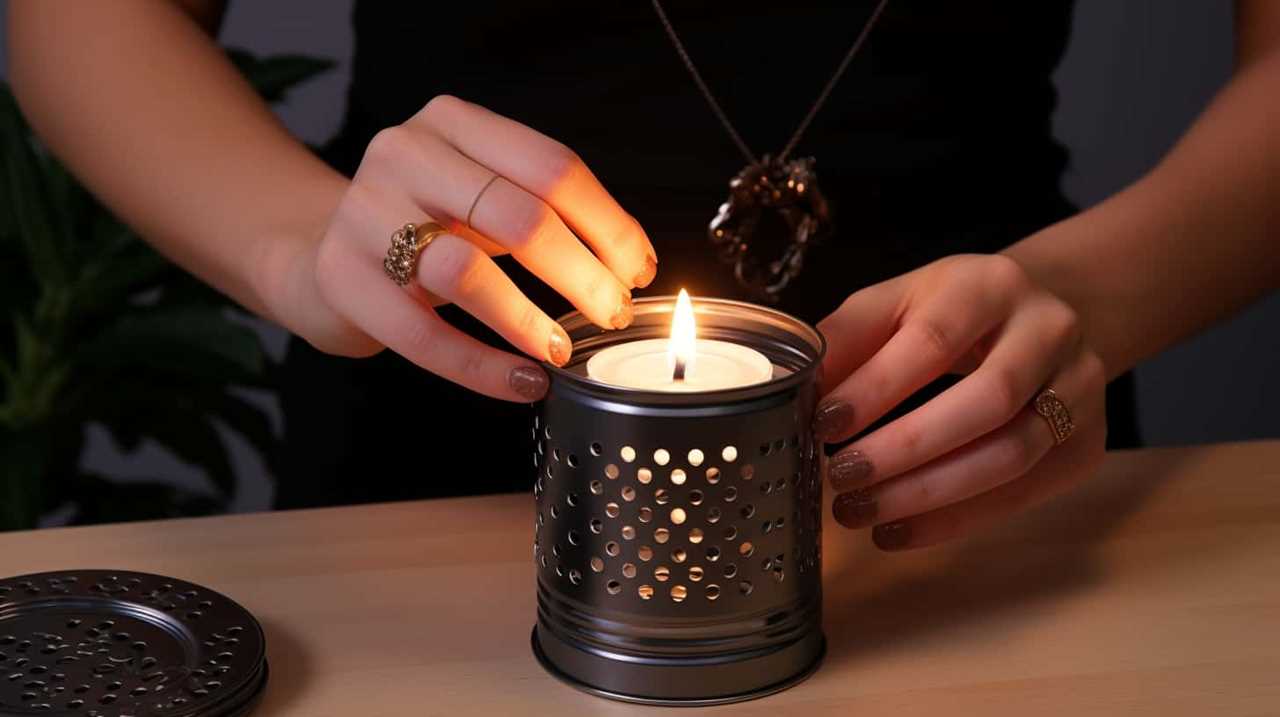
- Burning Techniques: The way a candle is lit and extinguished can influence the burning time. Properly trimming the wick before each use and avoiding drafts can help ensure a steady burn, reducing the likelihood of wax bubbling.
- Melting Point: Different waxes have varying melting points, which can affect their burning time. Waxes with higher melting points tend to burn slower and more evenly, reducing the chances of bubbling.
- Candle Size: The size of the candle can also impact the burning time. Larger candles generally burn longer because they contain more wax.
- Wax Quality: The quality of the wax used in a candle can affect its burning time. Higher-quality waxes often have better stability and burn more evenly.
Understanding these factors can help candle enthusiasts achieve optimal burning conditions and minimize wax bubbling.
Drafts and Airflow
When it comes to candle placement and airflow, it’s important to consider the impact of drafts.
Drafts can disrupt the steady burn of the candle, causing the wax to bubble.
This can occur when there’s a breeze from an open window or a fan blowing directly on the candle.

Candle Placement and Airflow
We found that improper candle placement can lead to wax bubbling due to drafts and airflow. When candles are placed in areas with excessive airflow, such as near open windows or vents, the air movement can disrupt the flame and cause it to flicker. This flickering can lead to inconsistent heat distribution, resulting in uneven candle wax melting.
Additionally, drafts can accelerate the burning process, causing the wax to melt more rapidly and potentially bubble. Furthermore, if a candle is placed too close to a wall or other objects, it can create a stagnant pocket of air around the flame, leading to poor airflow and possible candle wax discoloration.
Proper candle placement is crucial in ensuring a steady burn and preventing unwanted wax bubbling.
- Avoid placing candles near open windows or vents
- Ensure there’s sufficient distance between the candle and walls or other objects
- Use candle holders or trays to provide stability and protect surfaces from heat
- Consider using candle shades or covers to control airflow and prevent drafts.
Impact of Drafts
Our experience has shown that drafts have a significant impact on the bubbling of candle wax. Drafts, which are currents of air, can disrupt the steady burn of a candle and affect its performance. When a draft is present, it creates uneven airflow around the candle, causing the flame to flicker and dance. This erratic movement leads to the wax melting unevenly and bubbling. The impact of drafts on candle burning can be better understood through the following table:
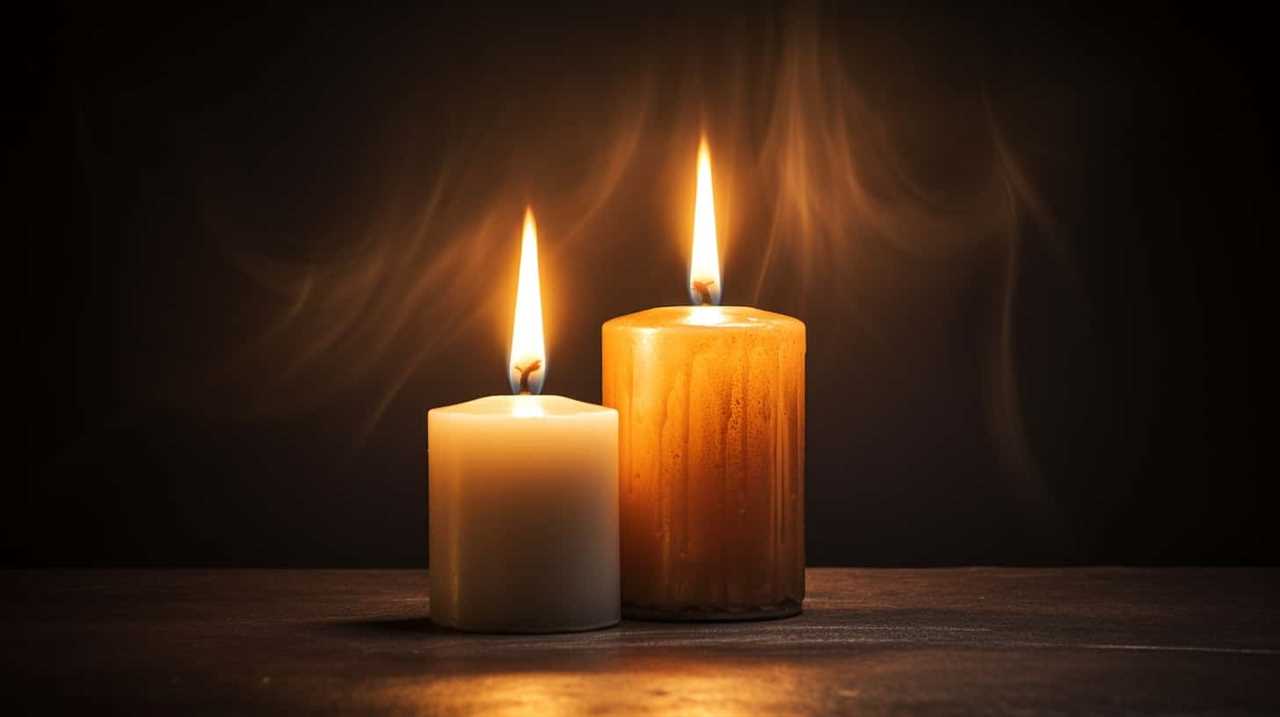
| Draft Strength | Candle Performance |
|---|---|
| Strong Draft | Uneven melting, excessive soot, and increased flickering |
| Moderate Draft | Minor uneven melting, moderate flickering |
| Weak Draft | Negligible effect on candle burning |
Excessive Heat
Excessive heat can cause candle wax to bubble. When the temperature rises above the melting point of the wax, it begins to liquefy, resulting in the formation of bubbles. These bubbles are formed due to the release of air and moisture trapped within the wax as it heats up.
To prevent excessive heat and bubbling, consider the following:
- Reduce heat exposure: Avoid placing candles in direct sunlight or near heat sources such as radiators or fireplaces.
- Trim the wick: A longer wick can generate more heat, increasing the risk of excessive heat and bubbling. Trim the wick to a quarter of an inch to control the flame’s intensity.
- Use a heat-resistant container: Ensure that the candle is placed in a container that can withstand high temperatures to prevent the wax from overheating.
- Monitor burn time: Avoid burning candles for an extended period as it can lead to excessive heat buildup.
Candle Care and Maintenance
To ensure the optimal performance and longevity of your candles, it’s important to prioritize proper care and maintenance. Candle safety should always be a top priority to prevent accidents and ensure a pleasant candle experience.
One crucial aspect of candle care is proper wick trimming. Regularly trimming the wick to about 1/4 inch before each use helps control the flame height and prevents black soot from accumulating on the container or walls.

This not only promotes a cleaner burn but also reduces the risk of fire hazards. Additionally, maintaining a clean and debris-free candle surface, using a snuffer to extinguish the flame, and storing candles in a cool, dry place will further enhance their lifespan and overall performance.
Taking these simple yet essential steps will help you enjoy your candles safely and maximize their burn time.
Frequently Asked Questions
How Can I Prevent My Candle Wax From Bubbling When Burning?
To troubleshoot candle wax bubbling, we must avoid common mistakes that cause it. By ensuring proper wick trimming, avoiding drafts, and using a suitable container, we can prevent the wax from bubbling during burning.
Are There Any Specific Candle Waxes That Are More Prone to Bubbling Than Others?
Some candle waxes are more prone to bubbling than others due to their composition and the presence of certain additives. Understanding the different types of candle wax can help prevent this issue.

Can Using a Larger Container Size Reduce the Chances of Wax Bubbling?
Using a larger container size may help reduce the chances of wax bubbling. By increasing the amount of space for the wax to expand and controlling the temperature more effectively, the risk of bubbling can be minimized.
Are There Any Specific Fragrance Oils That Can Cause Wax to Bubble More Frequently?
Certain fragrance oils can increase the likelihood of wax bubbling. Factors such as flashpoint, viscosity, and chemical composition can affect the wax’s behavior. It’s important to choose fragrance oils carefully to avoid unwanted reactions and ensure optimal scent throw.
Is There a Certain Burning Time That Is More Likely to Result in Wax Bubbling?
There is a certain burning time that can result in wax bubbling. The longer the candle burns, the more likely it is for the wax to bubble. This is due to the effects of burning time and the impact of temperature.
Conclusion
In conclusion, the bubbling of candle wax can be attributed to various factors such as:

- The composition of the wax
- Temperature fluctuations
- Air pockets
- Wick issues
- Type of candle
- Burning time
- Drafts and airflow
- Excessive heat
By understanding these factors and taking proper care of our candles, we can prevent or minimize wax bubbling, ensuring a more enjoyable and long-lasting candle experience.
Just as a candle’s flame dances with grace, let’s approach candle care with the same precision and attention to detail.

